Methylation is a biochemical process critical to various functions within the human body. It encompasses a wide range of biological processes from genetic expression to the aging process. It involves the addition of a methyl group to other molecules. This chemical modification can occur in different substances such as DNA, proteins, and other molecules within a cell.
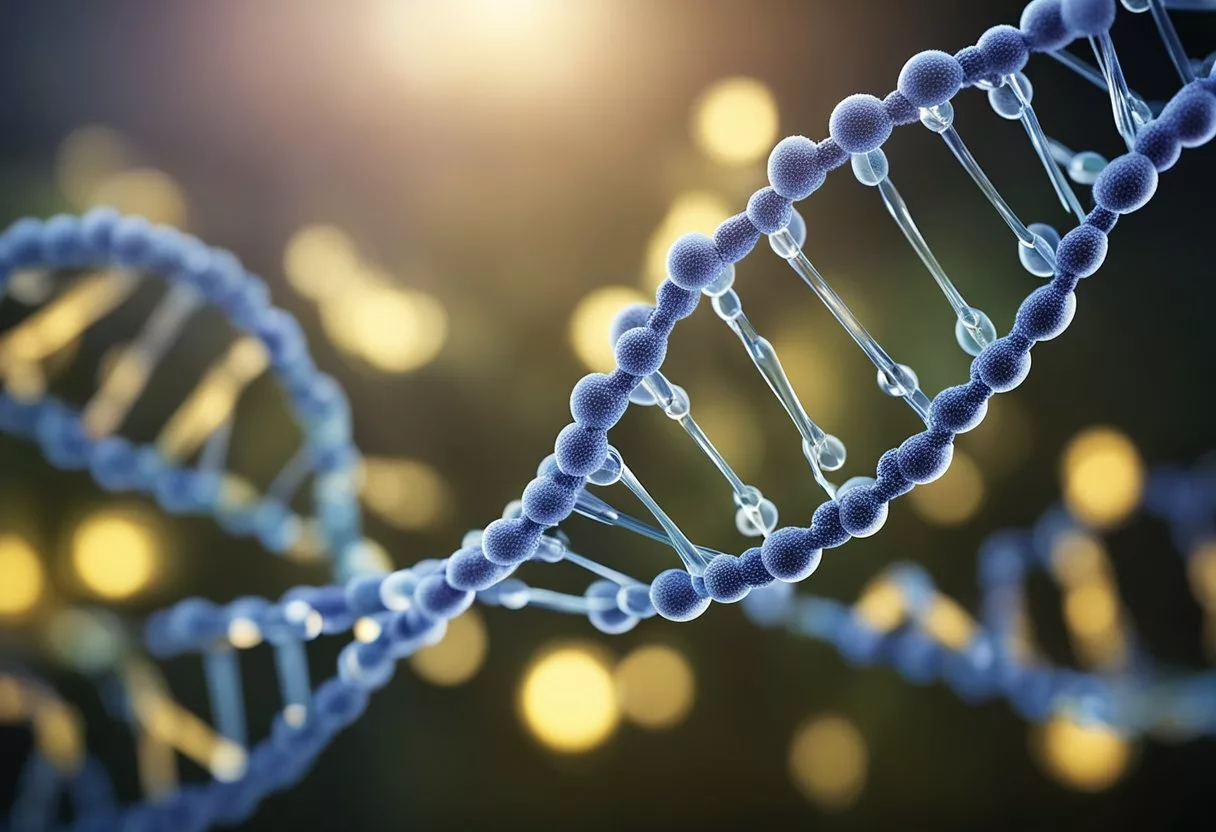
This process is fundamental in development, cellular differentiation, and the maintenance of genome integrity. In DNA methylation, enzymes known as DNA methyltransferases transfer a methyl group to the DNA molecule. They typically do this at the fifth carbon position of cytosine rings, leading to 5-methylcytosine.
The presence or absence of methyl groups on the DNA can significantly impact gene expression patterns. This, in turn, can affect an organism’s phenotype and disease susceptibility.
Key Takeaways
- Methylation is the process of adding a methyl group to molecules, notably DNA, affecting gene expression.
- It is essential for normal development, gene regulation, and the maintenance of cellular functions.
- Abnormal methylation patterns are linked to various diseases, highlighting its significance in human health.
Basics of Methylation
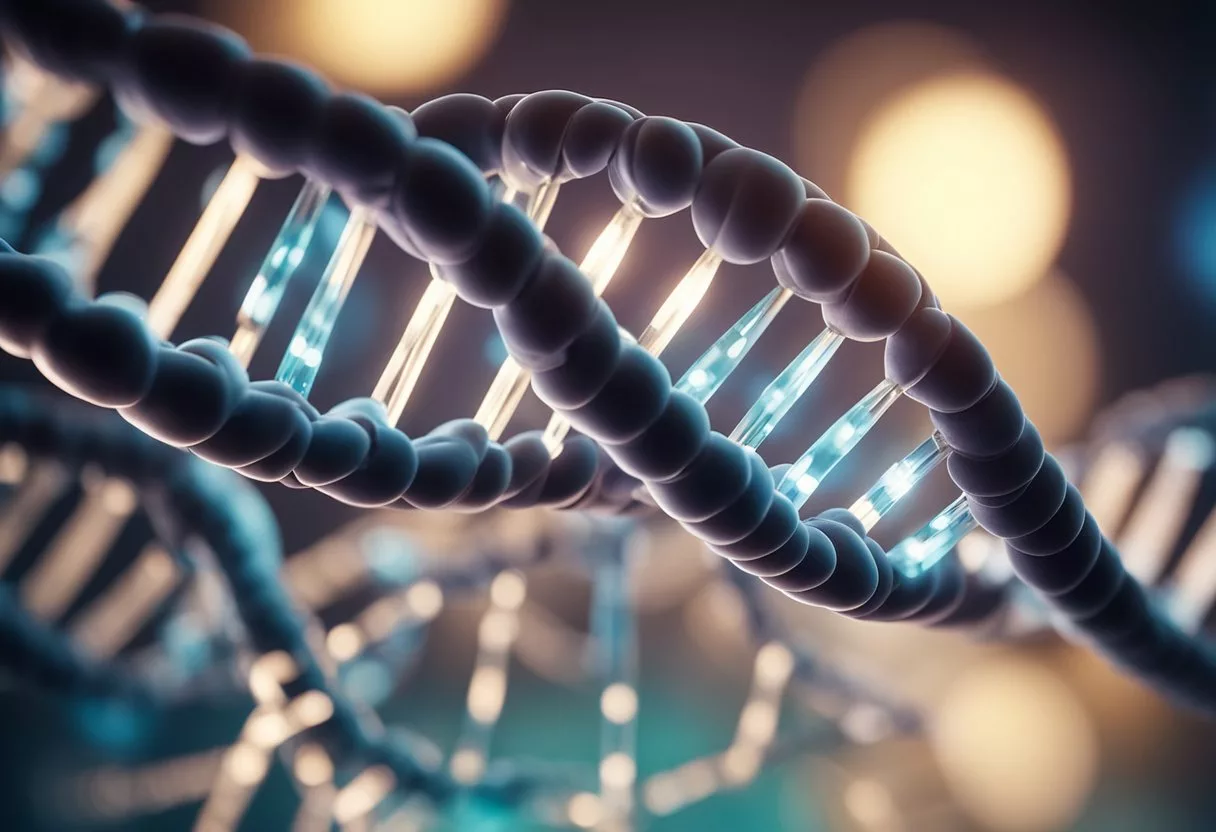
Methylation is a fundamental biochemical process that has significant implications for genetics and cellular function. It involves the transfer of a methyl group to specific targets within a molecule, affecting its behavior and interaction.
Definition of Methylation
Methylation, in organic chemistry, denotes the addition of a methyl group — a carbon atom bonded to three hydrogen atoms (CH3) — to a substrate. In biochemistry, this action is primarily associated with DNA and other biomolecules, where it serves as a critical epigenetic mechanism influencing gene expression.
Mechanisms of Methylation
The process is catalyzed by a group of enzymes known as methyltransferases. They facilitate the transfer of a methyl group from a donor molecule such as S-adenosyl methionine (SAM) to the recipient.
In biology, methylation of DNA at the fifth carbon of the cytosine ring results in 5-methylcytosine. This modified nucleotide has a regulatory role in gene expression.
Biological Significance of Methylation
Methylation plays a crucial role in various biological processes, including embryonic development, X-chromosome inactivation, genomic imprinting, and suppression of transposable elements. It’s a dynamic and reversible modification that affects how cells read the DNA code without altering the actual genetic sequence.
The dysregulation of methylation patterns is implicated in numerous diseases, including cancer.
Methylation in DNA
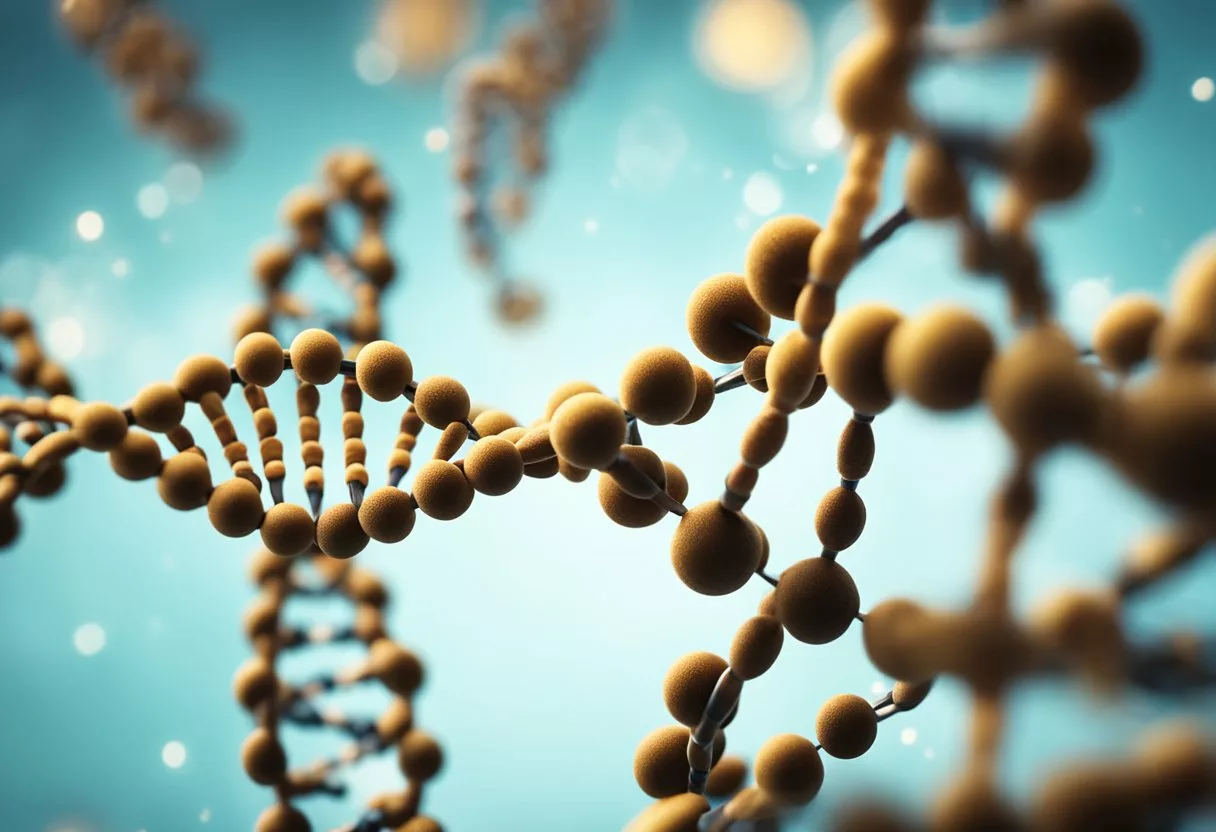
Methylation within DNA significantly affects genetic expression and is crucial for normal development in higher organisms. It involves the addition of methyl groups to DNA and predominantly occurs at cytosine nucleotides.
DNA Methylation Process
DNA methylation is a biochemical process by which methyl groups are added to the DNA molecule, specifically to the base cytosine. This action alters gene expression without changing the DNA sequence.
When cytosine is methylated, it primarily occurs at CpG sites where cytosine is followed by guanine in the DNA sequence.
Enzymes Involved
The addition of methyl groups to DNA is facilitated by enzymes known as DNA methyltransferases (DNMTs). There are two main types of DNMTs: maintenance DNMTs, such as DNMT1, and de novo DNA methyltransferases, including DNMT3A and DNMT3B.
Maintenance DNMTs ensure that the methylation pattern is preserved during DNA replication, while de novo DNMTs establish new methylation patterns.
Cytosine Methylation
Cytosine methylation generally involves the transfer of a methyl group to the 5′ position of the cytosine ring, forming 5-methylcytosine. The methylation of cytosine bases is a common form of DNA methylation, with a significant impact on gene regulation and expression.
5-Methylcytosine
5-Methylcytosine is quite often regarded as the “fifth base” of DNA, alongside adenine, thymine, guanine, and cytosine. It is a modified form of cytosine that has been methylated to control gene expression and is essential for various biological processes, including embryonic development and X-chromosome inactivation.
CpG Islands
CpG islands are regions rich in CpG sites and are usually found near gene promoters. They are typically unmethylated in normal tissues, which allows genes to be expressed.
However, methylation of CpG islands can occur, leading to gene silencing and playing a role in the regulation of gene expression and genomic imprinting.
Genomic Methylation Patterns
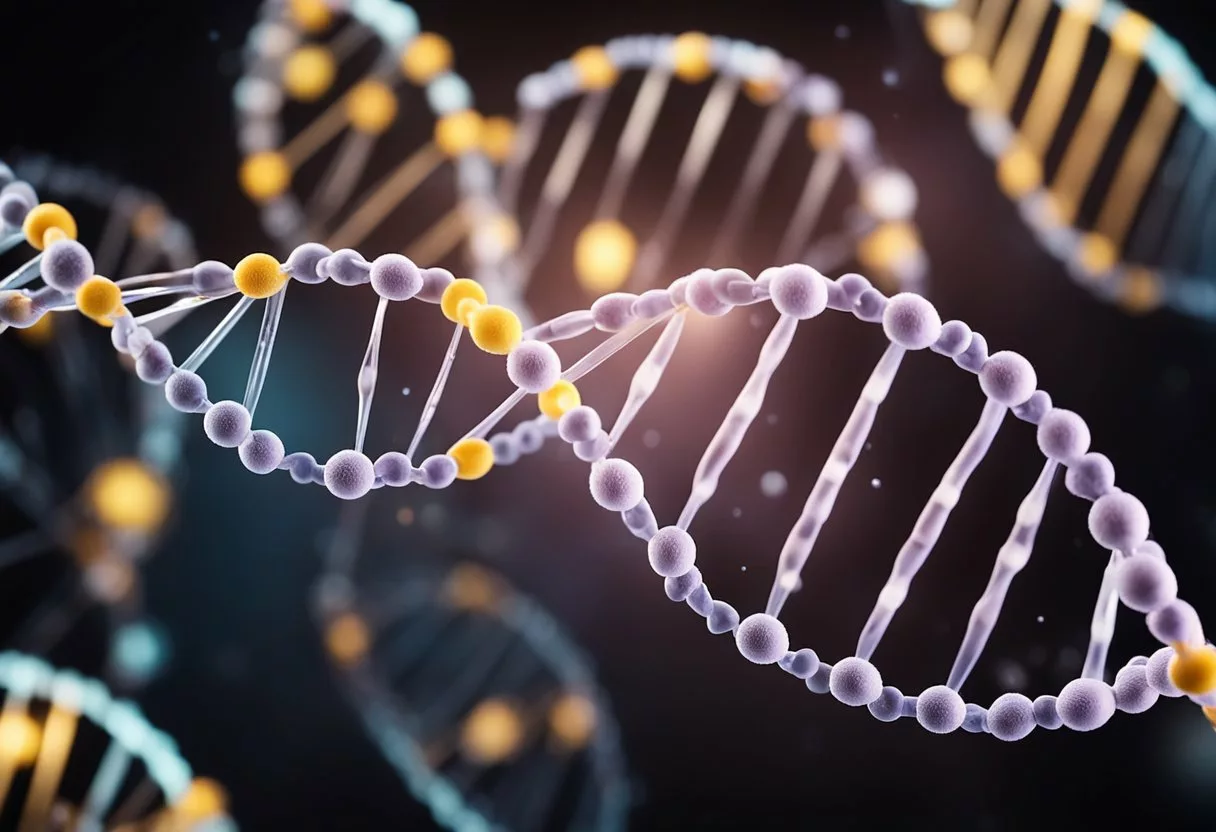
Genomic methylation is a critical epigenetic mechanism that functions in gene expression regulation and cellular differentiation. It involves complex patterns that are influenced by various factors, including epigenetic inheritance, cell type, and disease states.
Epigenetic Inheritance
Epigenetic inheritance involves the passing down of methylation patterns without alterations to the underlying genetic sequence. These patterns can dictate gene expression through generations of cells, thereby affecting an organism’s development and phenotype.
A study has shown that DNA methylation can change over a person’s life, particularly during early development and later in life, affecting gene function and health outcomes.
Variation by Cell Type
Different cell types within an organism can exhibit unique methylation patterns even though they share an identical genome. These patterns—referred to as the methylome—are crucial for determining cell-specific functions and are responsible for the diverse characteristics of each cell type.
Differential Methylation and Disease
Changes in DNA methylation patterns, known as differential methylation, can be associated with diseases, including cancer. Research has highlighted differential methylation as a potential biomarker for disease and a target for therapeutic intervention.
The study of epigenomics has been pivotal in understanding how aberrant methylation can lead to various human diseases by altering gene expression.
Impact on Gene Expression
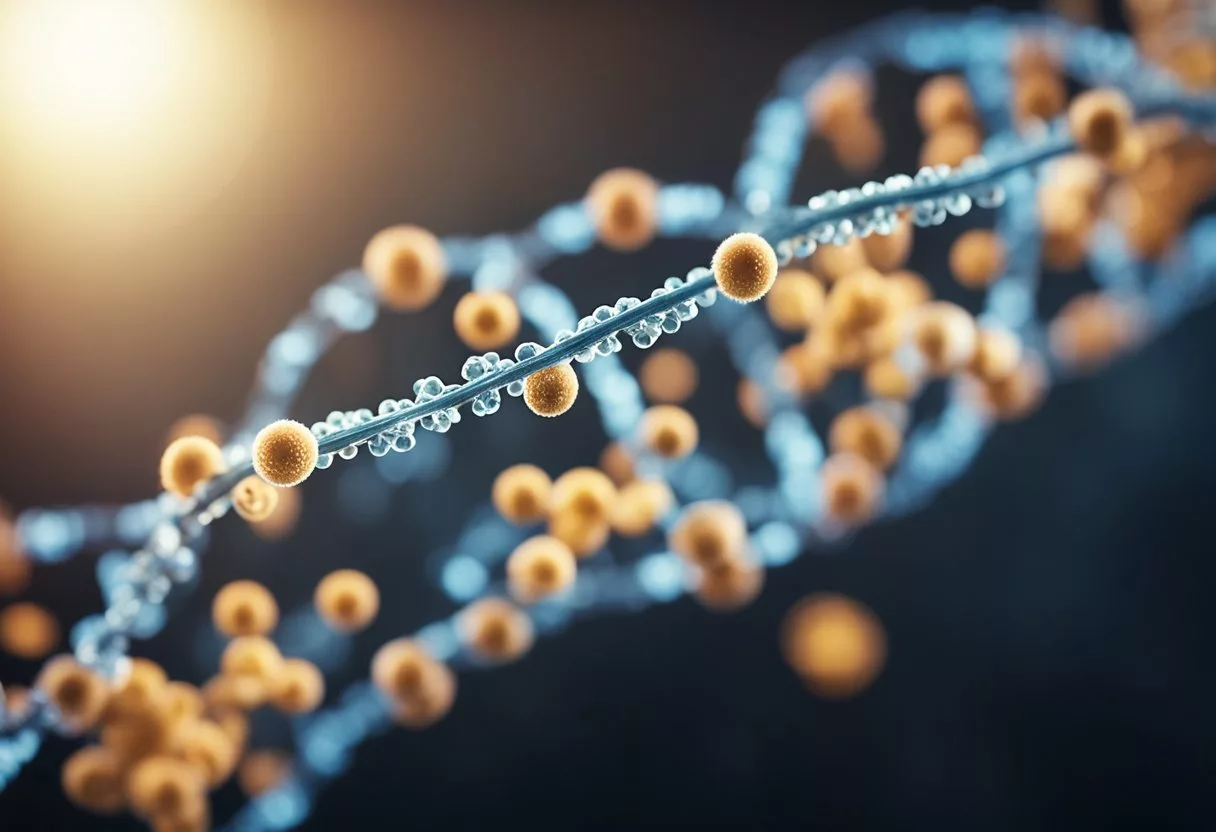
Methylation, involving the addition of methyl groups to the DNA molecule, plays a crucial role in regulating gene expression. These molecular modifications affect how cells interpret genes, subsequently influencing the genetic program.
Regulation of Gene Activity
DNA methylation typically occurs at cytosine bases that precede a guanine, known as CpG sites. When methyl groups are added to these sites, the activity of genes can be regulated.
An increase in methylation, particularly within the gene regulatory regions, is often associated with a decrease in gene expression.
For example, in cancer cells, abnormal methylation patterns can lead to the underexpression of tumor suppressor genes. This, in turn, contributes to uncontrolled cell growth and tumor development.
Promoters and Gene Silencing
Promoters, specific DNA sequences where the transcription of a gene is initiated, are crucial for the initiation of gene expression. Methylation can silence genes by modifying promoters, which prevents the binding of transcription factors necessary for gene transcription.
This gene silencing mechanism is a normal part of development, but when dysregulated, it can lead to diseases. A pertinent case is found in cancer development, where the hypermethylation of promoters of certain genes results in the lack of crucial proteins that typically protect against cancer.
Role in Cell Differentiation
In the context of cell differentiation, DNA methylation is paramount. During development, patterns of methylation change, which directs stem cells to differentiate into specific cell types.
Each cell type has a unique methylation pattern that correlates with the expression of genes necessary for that cell’s function. This intricate regulation ensures that a liver cell, for example, maintains a different function and identity than a brain cell, despite having the same DNA.
Methylation and Epigenetics
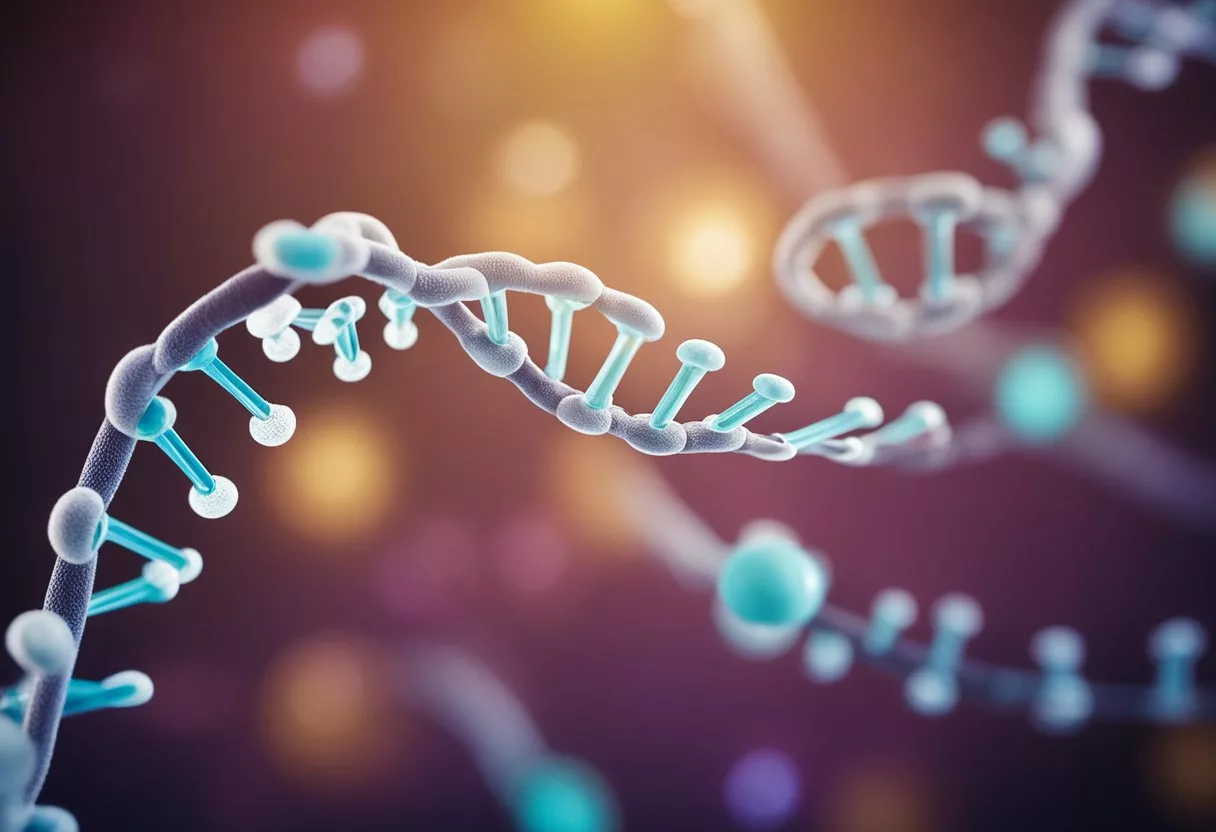
Methylation, a crucial epigenetic modification, involves the addition of a methyl group to DNA. This primarily affects how genes are expressed without altering the underlying genetic sequence. This process plays a significant role in cellular function and development by regulating gene activity.
Histone Modifications
Histones are proteins around which DNA is wrapped, and histone methylation[1] is a form of epigenetic regulation that can either activate or repress gene expression.
The addition or removal of methyl groups to or from histones can significantly alter the accessibility of chromosomal regions to transcription machinery, thereby controlling the expression of genes.
Epigenetic Mechanisms
An array of epigenetic mechanisms[2], including DNA methylation and histone modifications, collectively orchestrate the dynamic regulation of gene expression.
Methylation serves as a stable, heritable mark that can be influenced by life experiences and environmental factors, playing a key role in cellular differentiation and the preservation of genomic integrity.
Environmental Influences on Methylation
Exposure to various environmental influences[3] can impact methylation patterns, thereby influencing gene expression and potentially contributing to disease.
Nutritional components, toxins, stress, and lifestyle choices are among the factors that can lead to alterations in DNA methylation, suggesting a link between the environment and gene function mediated through epigenetic mechanisms.
Factors Influencing Methylation
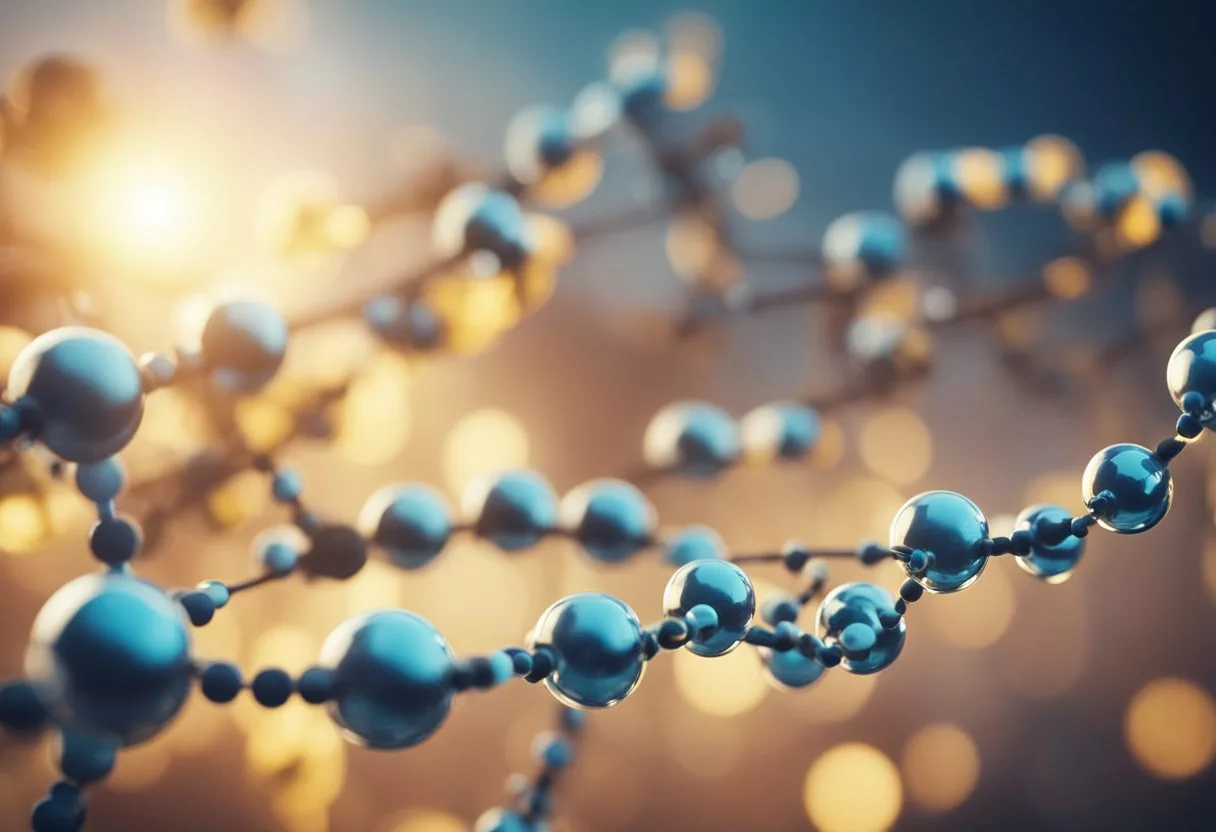
Methylation is a biochemical process pivotal to various bodily functions, including gene expression and DNA repair. This process can be influenced by several factors ranging from dietary intake to natural age progression.
Diet and Nutrients
Diet plays a fundamental role in methylation processes. Key nutrients essential to this include folate and vitamin B12.
Foods rich in folate such as leafy greens, and those high in vitamin B12 like beef liver and shellfish, facilitate the transfer of methyl groups. These groups are crucial for proper DNA methylation.
Moreover, methionine, an amino acid found in chicken and eggs, is vital for the synthesis of S-adenosylmethionine. This is a primary methyl donor in the body.
Lifestyle Factors
Lifestyle choices can significantly impact methylation. For example, alcohol consumption and smoking are two influences that can alter methylation patterns.
Smoking has been shown to disrupt normal methylation processes, which can lead to aberrant gene expression and potentially contribute to various diseases.
Conversely, moderation in lifestyle habits and avoiding excessive alcohol intake could support more stable methylation patterns over time.
Age-Related Changes
As individuals age, changes in methylation patterns naturally occur, sometimes resulting in what is known as epigenetic drift.
The aging process can lead to a decrease in the efficiency of the methylation machinery, potentially affecting gene regulation and contributing to age-related conditions.
Understanding how age-related changes in methylation occur is crucial to decipher the complexities of aging and develop strategies to mitigate adverse effects.
Methylation and Health Conditions
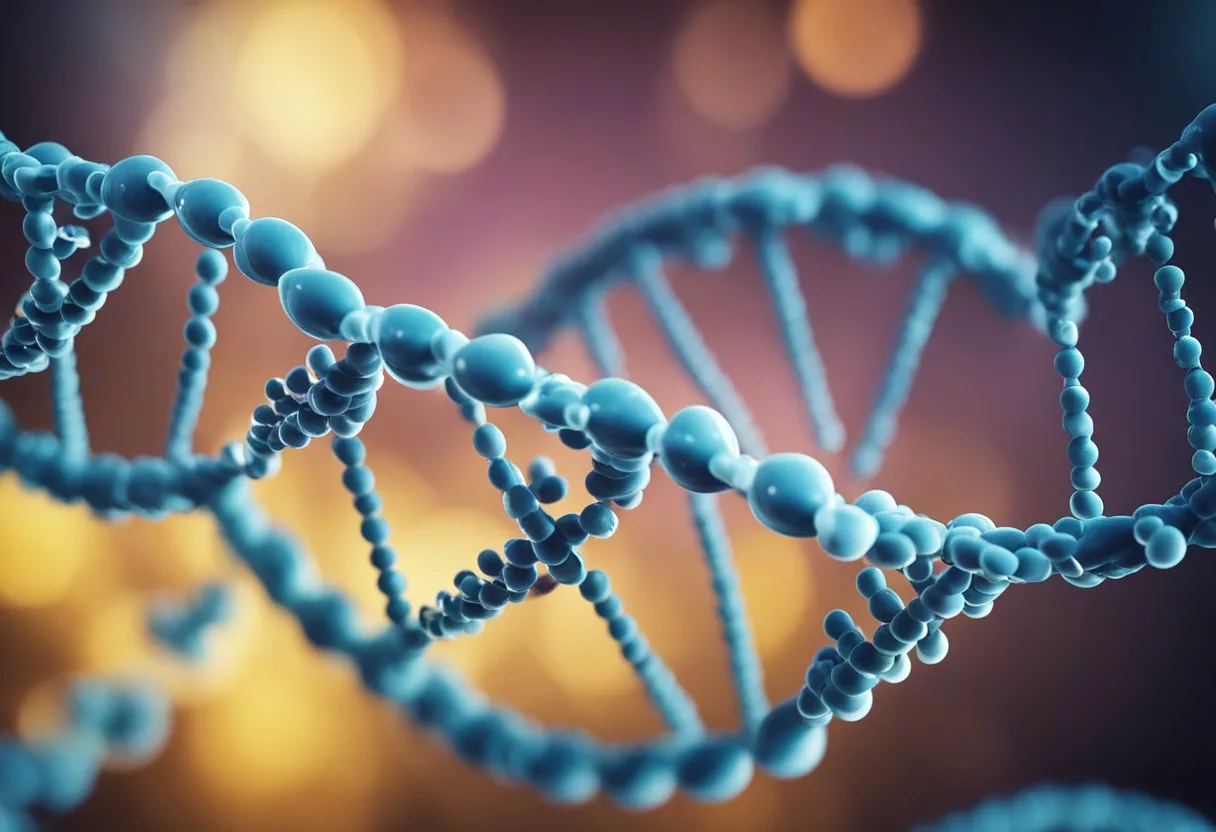
Methylation is a biochemical process that can significantly impact the development and progression of various health conditions. Abnormal patterns of methylation, such as hypermethylation and hypomethylation, are particularly pertinent in the context of disease.
Cancer and Methylation
Cancer formation and progression are closely linked with alterations in DNA methylation.
Hypermethylation in promoter regions of a gene often leads to gene silencing, which can inactivate tumor suppressor genes and contribute to cancer, such as breast cancer.
Conversely, global hypomethylation can activate oncogenes and make the genome more unstable. This promotes the proliferative capabilities of cancer cells.
Methylation Biomarkers
Biomarkers based on methylation patterns serve as important diagnostic and prognostic tools.
For example, the presence of methylated genes in bodily fluids can be indicative of cancer, even at early stages. This provides a potential for early detection and timely treatment.
Abnormally methylated genes serve as biomarkers that can guide personalized treatment strategies and monitor disease progression.
Epigenetics in Developmental Disease
Methylation plays a pivotal role in embryonic development and postnatal development. Disruptions in methylation processes can lead to various developmental diseases.
These epigenetic changes have been studied extensively to understand their impact on gene expression during critical periods of development. This provides insights into conditions caused by methylation anomalies.
Research and Technological Advances
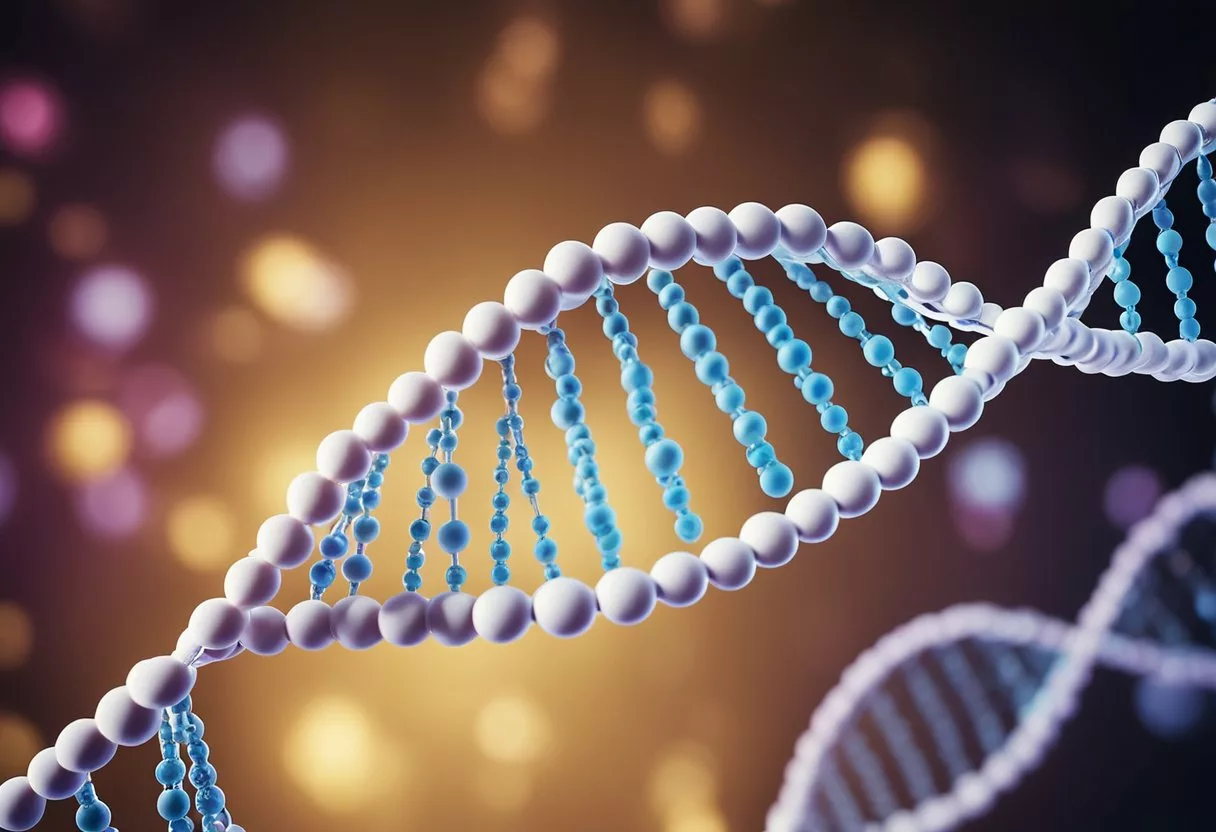
Significant strides in understanding the epigenetic mechanisms have been made due to innovative research techniques and technological advancements in methylation analysis. These breakthroughs pave the way for deeper insights into gene regulation and complex diseases.
Epigenetic Research Breakthroughs
Recent studies have illuminated the genetic influence on DNA methylation, revealing the existence of methylation quantitative trait loci (meQTLs).
These loci serve as a critical juncture for researchers to explore the biological mechanisms driving complex human phenotypes and diseases.
Innovative approaches in epigenetic research have extended the knowledge of the methylome’s influence on gene expression and disease progression.
Techniques in Methylation Analysis
Next-generation sequencing techniques have revolutionized methylation analysis, allowing for comprehensive explorations of the genome.
These methods have identified barriers such as significant errors during PCR amplification and bisulfite conversion, which can be limiting factors in accuracy.
Despite these challenges, recent advances have provided researchers with meticulous ways to map the DNA methylation pattern across the genome, including various repeating sequences.
These techniques, supported by organizations like the National Institutes of Health (NIH), underscore the precision and detail-oriented nature of modern methylation studies.
Future Directions in Methylation Studies
As the field moves forward, investigators anticipate exciting future directions including the refinement of methylation analysis procedures and a push towards personalized medicine.
The integration of methylation studies with genomic and epigenomic data promises a new horizon for epigenetic research, with potential applications ranging from early diagnostics to targeted therapeutics.
Researchers are committed to continuing this dynamic search for knowledge, understanding the shifting landscape of DNA methylation and its myriad roles in human health and disease.
Biochemical Aspects of Methylation
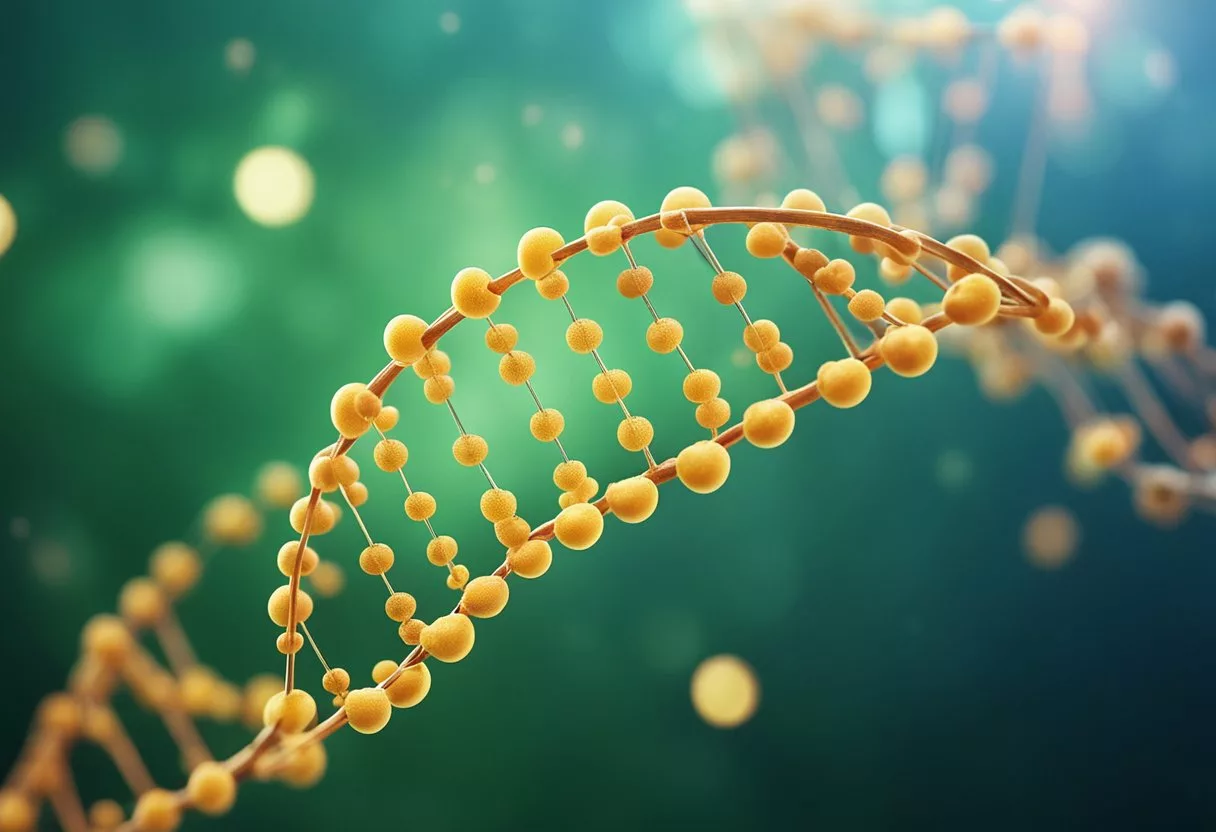
Methylation is a critical biochemical process involving the transfer of a methyl group to various substrates, affecting a myriad of cellular functions and genetic regulation.
Biochemical Pathways of Methylation
In methylation, enzymes known as methyltransferases, which include DNA methyltransferases (DNMT) and histone methyltransferases, play a central role.
These enzymes use S-adenosylmethionine (SAM), a common methyl donor, to transfer methyl groups onto specific targets such as nucleotides in DNA or amino acids in histone proteins. This transfer impacts gene expression and chromosome structure.
The process produces S-adenosylhomocysteine (SAH), which is subsequently hydrolyzed to homocysteine. Homocysteine can then be remethylated to methionine through pathways involving methylenetetrahydrofolate (MTHF), methylenetetrahydrofolate reductase (MTHFR), betaine, and choline.
De novo methylation pathways, where DNA or histones are methylated without a prior methyl group, are crucial during early development.
These activities are catalyzed by specific DNA methyltransferases, with DNMT3A and DNMT3B being key. Conversely, restriction enzymes may remove methyl groups in certain repair processes.
Importance of Methyl Donors
Methyl donors, such as methionine, folate, betaine, and choline, play a vital role in the methylation process by providing the necessary methyl groups.
Methionine adenosyltransferase (MAT) is the enzyme that synthesizes S-adenosylmethionine (SAM) from methionine and ATP; SAM is the principal methyl donor in the cell.
This underscores the importance of diet in providing sources of methionine and folate to support methylation activities.
The balance of homocysteine and cysteine levels is also significant, as abnormal levels can contribute to an increased allostatic load.
Precise methylation analysis is required to determine methylation patterns in DNA and histone that reflect upon health status, often indicating the need for dietary supplementation of methyl donors.
Protein methylation is another aspect influenced by the availability of these donors, highlighting the interconnectedness of methylation in various cellular processes, from epigenetics to enzyme function.
Frequently Asked Questions

Methylation is a crucial biological process that influences gene expression and overall health. Here we address some common inquiries to further understand its significance.
How does DNA methylation affect gene expression?
DNA methylation typically acts as a gene regulator. By adding methyl groups to the DNA molecule, usually on cytosine bases, it can inhibit the binding of transcription factors and effectively turn genes off, reducing their expression.
Why is methylation important in the body?
Methylation in the body is essential for maintaining the integrity of the genome and regulating gene activity. It is involved in various processes including development, X-chromosome inactivation, suppression of viral DNA, and genomic imprinting.
What are the basic functions of methylation in biology?
Methylation serves several functions; it is integral to epigenetic control of gene expression, it plays a role in the modification of heavy metals, regulation of enzyme activity, processing of chemicals and toxins, and repair of DNA.
How can one improve their body’s methylation process?
Nutrient levels need to be tested[4] to evaluate methylation status. Intake of B-vitamins, especially folate, vitamin B6, and vitamin B12, can support methylation processes, as they are cofactors for methylation reactions.
What does methylation mean in simple terms?
Simply put, methylation is the addition of a methyl group to a molecule. In biological systems, it is a chemical modification that affects DNA, proteins, and other molecules. This modification can alter their function and regulate their activity.
What role does methylation play in human health?
Methylation is a complex but fundamental process in human health. Errors in methylation are linked to several illnesses.
These include cardiovascular diseases, insulin resistance, and various brain disorders, highlighting its critical role in maintaining health.
References
- DNA Methylation and Its Basic Function. https://www.ncbi.nlm.nih.gov/pmc/articles/PMC3521964/ Accessed October 23, 2025
- The Role of Methylation in Gene Expression. https://www.nature.com/scitable/topicpage/the-role-of-methylation-in-gene-expression-1070/ Accessed October 23, 2025
- DNA methylation 101: what is important to know about DNA methylation and its role in SLE risk and disease heterogeneity. https://www.ncbi.nlm.nih.gov/pmc/articles/PMC6069928/ Accessed October 23, 2025
- Methylation for Beginners: Why Nutrient Levels Need to Be Tested. https://riordanclinic.org/2016/11/methylation-beginners-nutrient-levels-need-tested/ Accessed October 23, 2025
